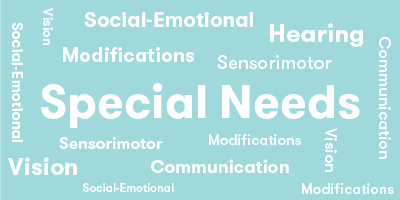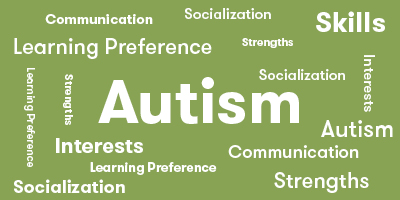






Collapsible content
Today we’re going to feed some hungry animals some tasty snacks as we learn to play Simply Fun’s Animal Snacks.
Animal Snacks is a fun game for children ages 3 and up, and can be played with 2 to 5 players.
In Animal Snacks, players will practice their matching skills as they match the colors and patterns on the die to one of the animals or snacks.
They’ll also practice taking turns, by waiting patiently as the other players roll the die and move animals from player to player until they roll a purple, then everyone feeds their animals, and the die is passed to the next player.
To set up the game, place the 5 wooden animals in the center of the table. Starting with the youngest player, and proceeding clockwise, have all players choose one animal and place it in front of them.
Distribute all 36 snacks equally among the players. Each player should have an equal number of snacks. If there are 5 players in the game, put one snack back in the cloth storage bag.
While there is no play board, the players will sit in a circle and leave open space right in front of them so the animals can move from player to player. The middle of the circle will be the feeding area.
Give the youngest player the wooden die – with multiple colors and patterns – and you’re ready to get started!
The object of the game is to be the first player to feed ALL your snacks to the hungry animals.
To begin, the first player rolls the wooden die. If the die reveals a pattern – or any color besides purple – the player moves the matching animal to the next player and rolls again.
As long as that player rolls anything but purple, the animals keep moving and the player keeps rolling the die.
But… if the player rolls purple, it’s snack time!
Each player looks at the animals that are right in front of them and puts one snack for each animal into the feeding area. Players may only feed the animals right in front of them. You may not feed another players animal. Some players may get to feed more animals than others, it just depends on how many animals each player has in front of them when a purple is rolled.
After all the animals have been fed, its the next player turn and they roll the die until its snack time again!
The first player to run out of snacks wins the game!
Feed the animals and quiet their rumbling tummies with Simply Fun’s Animal Snacks.


Core Standard*: Math
Math
- Counting & Cardinality
- Count to tell the number of objects. Grade Level K
- Geometry & Operations
- Demonstrates increasing interest and awareness of numbers and counting as a means for solving problems and determining quantity.
- Begins to associate number concepts, vocabulary, quantities and written numerals in meaningful ways.
- Begins to make use of one-to-one correspondence in counting objects and matching groups of objects.
- Patterns & Measurement
- Shows increasing abilities to match, sort, put in a series, and regroup objects according to one or two attributes such as shape or size.


Explore
What Does Child Do To Use Skill In The Game?
Animal Snacks involves very light exploration as young players look at the different animals to look for a match to the die they rolled.
How Parents Can Assist Learning
If children consistently have a hard time find a match, encourage them to hold the die next to each Wood Animal to help examine and look for a match.
Learning Implications and Educator Support
Animal snacks is a good game for children to learn how to look for characteristics of one object based on the characteristics of another. If a child consistently has a hard time find a match, encourage them to hold the die next to each Wood Animal to help examine and look for a match.
Determine
What Does Child Do To Use Skill In The Game?
Players must determine the matching animal to the die, and how many purple Snacks to put in the Snack Feeding Area.
How Parents Can Assist Learning
If children consistently have a hard time find a match, encourage them to hold the die next to each Wood Animal to help examine and look for a match.
Learning Implications and Educator Support
Animal snacks is a good game for children to learn how to look for characteristics of one object based on the characteristics of another. It is also a good for learning basic counting as children need to count their Feeding Tiles if purple is rolled.
If a child consistently has a hard time find a match, encourage them to hold the die next to each Wood Animal to help examine and look for a match.
Compare
What Does Child Do To Use Skill In The Game?
Comparing is the thinking skill most used in Animal Snacks.
How Parents Can Assist Learning
If children consistently have a hard time find a match, encourage them to hold the die next to each Wood Animal to help examine and look for a match.
Learning Implications and Educator Support
Animal snacks is a good game for children to learn how to look for characteristics of one object based on the characteristics of another. It is also a good for learning basic counting as children need to count their Snack tokes if purple is rolled.
If a child consistently has a hard time find a match, encourage them to hold the die next to each Wood Animal to help examine and look for a match.
Practice
What Does Child Do To Use Skill In The Game?
Playing Animal Snacks gives young players an opportunity to practice learning color and pattern matching, counting, and comparing numbers to amount of Snack tokens needed when purple is rolled.
How Parents Can Assist Learning
No special adults support is required. However, to help strengthen the learning, encourage children to count aloud and talk about what color or pattern they are looking for.
Learning Implications and Educator Support
In addition to the other skills mentioned in the Explore, Determine and Compare sections, the counting feature of the game is good for learning and practicing one-to-one correspondence and learning that the last number counted (ex: the number three which is the total number of animals in front of the child) is equivalent to an amount of objects (ex: 3 Snack tokens).
To help strengthen the learning, encourage children to count aloud and talk about what color or pattern they are looking for.
*Data compiled from CCSSI ELA Standards, WA Science Standards, and Washington Social Studies Standards


Cognitive
Suggestions for How to Modify Play Experience
Model matching the color and pattern by holding up die face next to the matching animal. Also, hold the purple die face next to each animal to show it doesn't match. Then ask, "Is this the same color? Does it match?" Practice naming the animal that matches the color.
When it is time to feed the animals, have each child count how many animals they have. Then ask, "How much food do you need?" This teaches the cardinal principle of the last number counted is the total amount. Children also learn to match number of animals to number of food pieces.
Help children learn directions. Ask, "Where does the animal move to?" The child can name the player or, for older children, say, "one to the left."
Communication
Suggestions for How to Modify Play Experience
Practice naming the animal and the color that matches the die face. This teaches animal names and helps children practice articulation of words.
When it is time to feed, have each child verbally count how many animals they have.
Expand language by asking what the animal is eating, where he is going, etc. Encourage talking during the game.
Sensorimotor
Suggestions for How to Modify Play Experience
Animal Snacks is a good game for developing fine motor skills. Animals are large and easy to move. However, but if a child has limited ability to move, other players can ask, "What should I do?" Let the child direct the actions that they wants another player to make.
Social Emotional/Behavioral
Suggestions for How to Modify Play Experience
Animal snacks teaches sharing as children pass their animals to another player. It may be difficult for some players to give away "their" animals. Point out how each player is giving and gaining animals. Have them look at the animal(s) the player to their right has. Explain that these animals may come to them.
Encourage the impatient child to guess what color will be thrown next. Have them watch the color on the die face to see if they were right. This will teach children to anticipate, wait, and watch other players moves. Point how other players are being patient and reinforce their waiting and watching.
Vision
Suggestions for How to Modify Play Experience
The die is large and the colors are bright; but the pink and purple may be difficult for some children to differentiate. Use a black marker to place a large dot in the center of the purple face of the die. This will help children see which side of the die indicates that it is time to feed the animals.
Hearing
Suggestions for How to Modify Play Experience
Hearing should not be a problem. Directions can be demonstrated or signed.
*Data compiled from CCSSI ELA Standards, WA Science Standards, and Washington Social Studies Standards


Autism Strengths & Interests
Short Summary of Strengths & Interests
- Can match colors.
- Can match patterns.
- Can count to five.
Is good at matching visual items
Is This Game Appropriate? Yes
Description
Players match colors and or patterns of the die to the colors and patterns on the animals.
Has a good memory for sensory details, including visual, touch, taste and smell
Is This Game Appropriate? Yes
Description
Animal Snacks is a visual game involving matching of colors and patterns which will be enjoyable for children who are detail oriented. Also, children who know about the animals in the game may be inspired to "animate" them by making the animal's sound or pretending to eat the food tokens.
Has a good memory for words, phrases and dialouge
This game is not appropriate
Has a good memory for pictures, numbers and patterns
This game is not appropriate
Likes to put things in order or a sequence
This game is not appropriate
Learns through visualizing or "replaying" actions in their mind
This game is not appropriate
Likes activities with rules, such as math and phonics
This game is not appropriate
Is very concrete and literal
Is This Game Appropriate? Yes
Description
For children who prefer concrete activities like building with blocks, Animal Snacks may be very enjoyable as the finding and moving the wooden animal characters is tactile and obvious, as is placing the Food Tokens in the feeding area of the game.
Learns in small "chunks" (for example, phone numbers are 3 chunks of number xxx-xxx-xxxx that are combined together)
This game is not appropriate
Is good at nonverbal reasoning and logic
This game is not appropriate
Likes spatial problem solving
Is This Game Appropriate? Yes
Description
Some children are good at spatial games and activities like puzzles, building blocks or shape sorters. Animal Snacks is a good game for children to uses and expand their spatial problem solving skills as they look for and move wooden animal characters to the proper location.
Can read well with good vocabulary, though may not fully comprehend content
This game is not appropriate
Likes to use and has good fine motor skill
Is This Game Appropriate? Yes
Description
Animal Snacks invites children to use their fine motor skills on their turn as they move a wooden animal from one player to the next or count up their Food Tokens to place in the middle of the game area. And, the animal figures will be fun to play with on their own by children who like playing with action figures, plastic animals, blocks and similar toys.
Likes established routines or set ways of doing things
Is This Game Appropriate? Yes
Description
Animal Snacks is played with simple rules that are easy to understand. Also, some children strongly prefer activities that systematic or consistent. Animal Snacks is good for these children because each turn repeats the same actions of rolling die, moving an animal that matches the die one player to the left or feeding the animals with the Food Tokens.
Likes manipulating, constructing or building things
This game is not appropriate
Likes to use and has good musical abilities
This game is not appropriate
Likes to use and has good drawing skills
This game is not appropriate
Autism Special Considerations
Appears to ignore other's communication and/or has difficulty giving eye contact to a communication partner
Is This Game Appropriate for Child with Characteristic? Yes
Can Child with Characteristic Play Game w/o Modification? Yes
Strategies for Developing Compensatory Skills:
Although players do not need to look at each other, they do need to watch the movement of the animals in the game. The animals move from player to player, so players need to pay attention so they know how many animals to feed when the purple die turns up.
Has difficulty understanding complex verbal directions
Is This Game Appropriate for Child with Characteristic? Yes
Can Child with Characteristic Play Game w/o Modification? Yes
Strategies for Developing Compensatory Skills:
Directions for Animal Snacks are simple to understand and can easily be demonstrated.
Uses vocabulary inaccurately or demonstrates echolalia (repeating another's speech)
Is This Game Appropriate for Child with Characteristic? Yes
Can Child with Characteristic Play Game w/o Modification? No
Strategies for Developing Compensatory Skills:
Children who repeat others' comments or questions may be distracting or confusing to other players. Remember that echolalia is the child's way of communicating. Try to figure out what the child wants or is trying to express. Model a phrase that helps the child communicate more appropriately. For example, if the child repeats another player's question, "Whose turn is it?" Provide a model, such as, "It is Jake's turn now."
Gets stuck repeating a verbal topic or physical actions and/or has difficulty attending to others' actions or topic.
Is This Game Appropriate for Child with Characteristic? Yes
Can Child with Characteristic Play Game w/o Modification? No
Strategies for Developing Compensatory Skills:
Some children with autism may use repetitive actions as a form of stimulation. Encourage the child to pay attention to the game by holding the die face for the child to see after each roll. Make a comment such as, "This color is orange. See if your friend finds the orange animal." This will engage the child in the game, even when it is not his or her turn. Give the child a toy animal to hold.
Has difficulty producing speech/communication
Is This Game Appropriate for Child with Characteristic? Yes
Can Child with Characteristic Play Game w/o Modification? Yes
Strategies for Developing Compensatory Skills:
No language is needed to play.
Has difficulty sequencing multi-step actions and/or doing complex abstract tasks
Is This Game Appropriate for Child with Characteristic? Yes
Can Child with Characteristic Play Game w/o Modification? Yes
Strategies for Developing Compensatory Skills:
Animal Snacks involves just a couple of steps, depending on the throw of the die. Players either move an animal or feed animals.
Demonstrates difficulty initiating and maintaining social interactions
Is This Game Appropriate for Child with Characteristic? Yes
Can Child with Characteristic Play Game w/o Modification? Yes
Strategies for Developing Compensatory Skills:
Animal Snacks is a good game for practicing sharing. As players move animals from one player to another, they watch other players give away their animals without being upset. They also see that they will have an opportunity to both give and receive animals.
Acts out or demonstrates avoidance behaviors when frustrated, overwhelmed, or needs more sensory input.
Is This Game Appropriate for Child with Characteristic? Yes
Can Child with Characteristic Play Game w/o Modification? No
Strategies for Developing Compensatory Skills:
Children who get upset when the animals in front of them are moved may need some support. Model dealing with these emotions. For example, "Oh, no. I have to move my elephant. That makes me sad, but I'll get another animal soon."
Has short attention span for non-preferred activities
Is This Game Appropriate for Child with Characteristic? Yes
Can Child with Characteristic Play Game w/o Modification? No
Strategies for Developing Compensatory Skills:
Animal Snacks does not take long to play. However, in the beginning, it may help to reduce the amount of food chips to make the game go faster. As the child learns the rules and enjoy the game, add more food chips.
Needs sameness or consistent routines and/or has difficulty with transitions from one activity to another
Is This Game Appropriate for Child with Characteristic? Yes
Can Child with Characteristic Play Game w/o Modification? Yes
Strategies for Developing Compensatory Skills:
The game has simple rules. If the child has difficulty with moving the animals in front of them, other players can model how to deal with these emotions. For example, "Oh, no. I have to move my elephant. That makes me sad, but I'll get another animal soon. I can wait."
Has difficulty understanding others' feelings, intentions, and the reasons for others' actions.
Is This Game Appropriate for Child with Characteristic? Yes
Can Child with Characteristic Play Game w/o Modification? Yes
Strategies for Developing Compensatory Skills:
Animal Snacks does not require understanding another player's feelings.
*Data compiled from CCSSI ELA Standards, WA Science Standards, and Washington Social Studies Standards


Extra Ways to Play the Game
Use the wooden animals in Animal Snacks for dramatic play. Children can add trucks or train cars to carry the animals. The purple chips can still serve as food. Build houses for the animals out of little boxes to be used in the dramatic play.
Materials Needed
Trucks or train cars, small boxes, miniature people figures, and other dramatic play toys.
Developmental Benefits
Dramatic play allows children to give life to the animal characters. Children can build a story in addition to feeding the animals. Dramatic play has been shown to support early language and literacy development.
Extra Ways to Play the Game
Make a zoo path to serve as a game board. Using a large piece of construction paper, have the children draw two large concentric circles to make a path for the animals to walk on. (See image in the directions.
Materials Needed
Construction paper, crayons, colored pencils, or markers.
Developmental Benefits
This activity encourages children to practice drawing circles and learn about concentric circles. Encourage the children to decorate the board with trees, flowers, and other creative ideas.
Extra Ways to Play the Game
Allow players to choose which direction to move their animal. This adds a little strategy to the game.
Materials Needed
No additional materials needed.
Developmental Benefits
Adding a directional movement choice to Animal Snacks enables players to analyze which direction of movement will help the player most. Players can make choices to aid one player over another, thus using the move defensively.
*Data compiled from CCSSI ELA Standards, WA Science Standards, and Washington Social Studies Standards
Game Details
- 5 Wood Animals
- 36 Snacks
- 1 Wood Die
- 1 Cloth Bag
- 1 Rules Booklet
- Choosing a selection results in a full page refresh.
- Opens in a new window.









